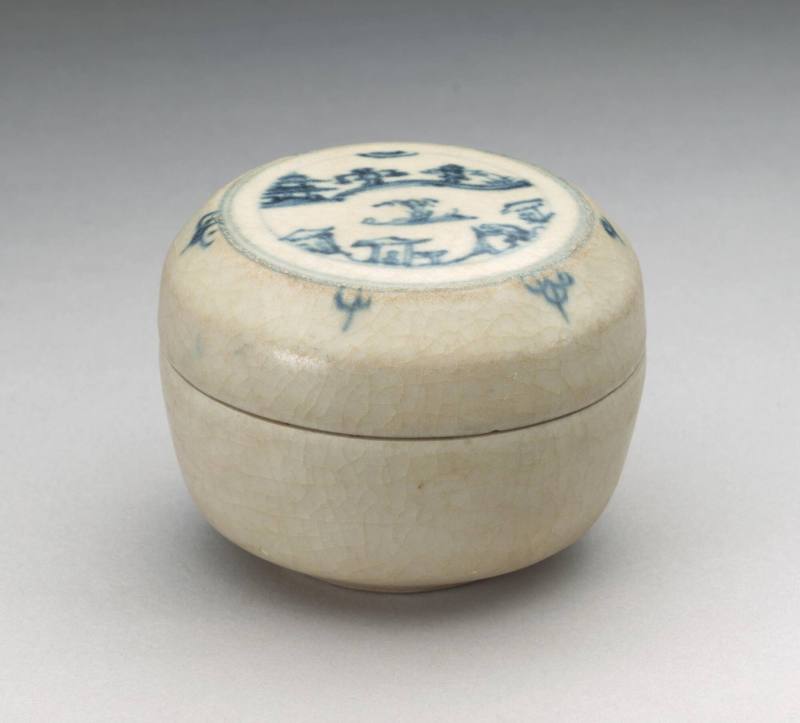

Object Details
Culture
Nayarit (Mexico)
Date
ca. 100 B.C. – 250 A.D.
Medium
Ceramic
Dimensions
Height: 14 inches (35.6 cm)
Credit Line
Gift of Noyes Huston, Class of 1932, and Margaret Huston
Object
Number
74.022.001
BRIEF DESCRIPTIONThis ceramic Nayarit sculpture shows three people sitting in a structure, possibly (…)
BRIEF DESCRIPTIONThis ceramic Nayarit sculpture shows three people sitting in a structure, possibly a shrine or a house.WHERE WAS IT MADE?This was made in the western region of what is now Mexico.HOW WAS IT MADE?This sculpture was made with a combination of clay hand-building techniques. The form of the roof was made with coils, and additional elements, including the figures, were hand modeled. The finished form was painted with tan, black and white slip paints. Slip paint is made by mixing different-colored clays or ground mineral pigments with water. After the slip dried, the surface was burnished with a piece of bone or smooth stone, and then the sculpture was fired in an earthen pit.HOW WAS IT USED?The original function of archaeological figurines found in museum collections is uncertain. Today archeologists carefully record information about the associations between artifacts and the circumstances of their burial as they are unearthed, and we can draw many conclusions about object function. However, very few of the archaeological objects found in museums today were excavated in a careful, scientific manner, so we have fewer clues about their past associations and function.A wide range of people and objects are shown in pre-Columbian pottery. From burials, we know that the variety of jewelry and clothing styles reflect the actual appearance of many of these prehistoric people. Because figurines represent many life stages and ordinary human activities, they likely served to exemplify the usual norms of behavior, to serve as guidelines or rules to help socialize people and integrate them into society. Although obviously decorative, figurines could also have been used to make offerings to supernatural powers, to serve as good luck charms, or to accompany the dead as grave goods.Most pre-Columbian objects from this region of Western Mexico were found in shaft tombs. Ranging up to 6 meters in depth, these tombs consist of a chamber leading from a narrow vertical hole or shaft. Because these chambers were used to bury many people over long periods of time, it is likely that they were maintained and used by family groups. West Mexican shaft tombs range in date from the Early Formative to the Early Classic periods (1800-0 BC), but most date to the Late Formative (500-0 BC). Tombs may contain hundreds of figures; among them, paired sets of matching male and female figures, perhaps representing married couples, are common.WHY DOES IT LOOK LIKE THIS?Group figural scenes showing a variety of subjects are a well-known Nayarit art form. Look at the three human figures seated on the inside of the structure; this particular Nayarit scene may depict a shrine or a house. Notice the lizard on the rounded roof; lizards are phallic (fertility) symbols.












